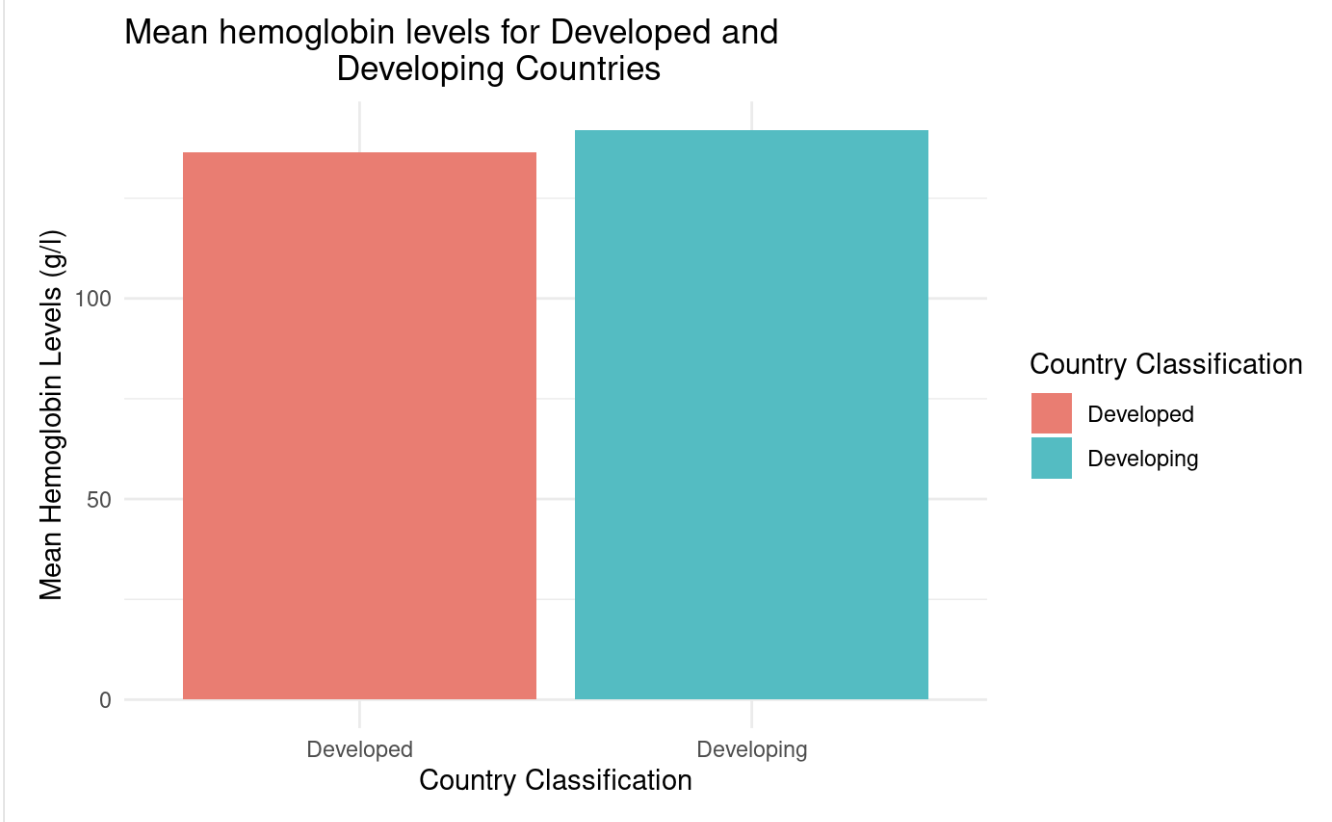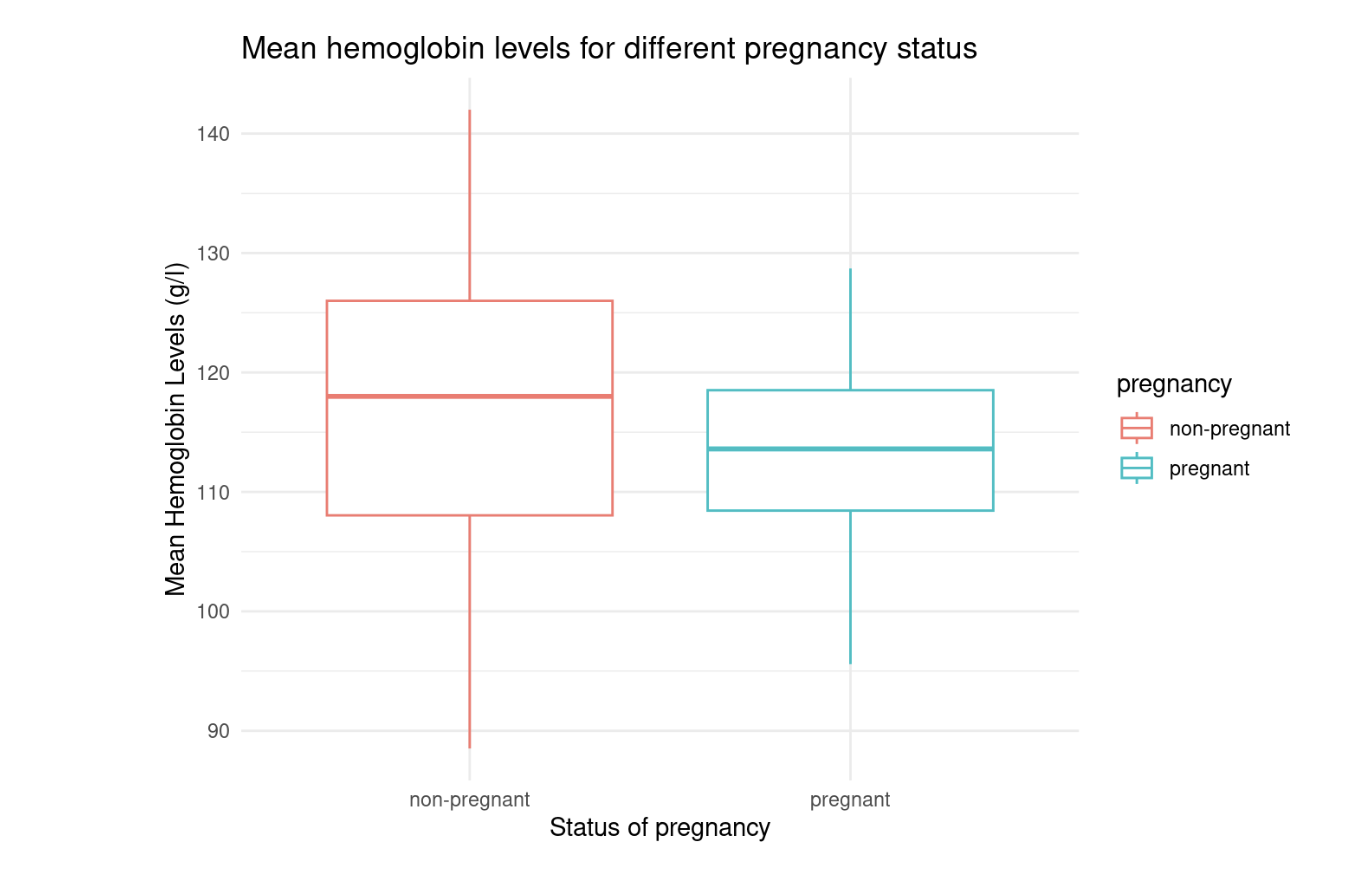
Investigating Anemia Levels in Women
INFO 2950 Final Project
Introduction to Anemia
Anemia is a blood condition that happens when the blood produces too few healthy red blood cells.
Anemia is the most common blood condition worldwide.
Anemia is 10 times more common in women than men, and even more common in women of menstruating age.
Causes of anemia include: Iron deficiency, vitamin B12 deficiency, various autoimmune diseases, and more.
Symptoms: Fatigue, weakness, shortness of breath, irregular heart beats, dizziness, cold hands and feet, and more.
The Data Set
Dataset source: World Health Organization
Includes: Country, year the data was collected, sex, pregnancy status, sample size, mean hemoglobin level
The dataset grouped sex by either women, or men and women. We filtered our data to focus on anemia in women.
We created a new variable to denote whether a country is a developing country or not.
An additional column for country classification (developed/ developing) was added by creating a vector for developing countries as declared by the Minister for Foreign Affairs.
Data Analysis part 1
Normal hemoglobin levels for women are 121 g/L to 151 g/L
- Do women in Developing and Developed Countries have different levels of mean hemoglobin?
Mean for developed countries = 126.5313 g/L
Mean for developing countries = 114.7329 g/L
Data Analysis part 2
Normal hemoglobin levels for women are 121 g/L to 151 g/L
- Do pregnant women and non-pregnant women have different levels of mean hemoglobin?
Mean for non-pregnant women = 125.6261 g/L
Mean for pregnant women = 113.5894 g/L
Graphs and Visualizations

Developing vs. Developed Countries
Hypothesis Test:
\[ H_0 = \mu_{Develeoped} = \mu_{Developing} \]
\[ H_A = \mu_{Develeoped} \neq \mu_{Developing} \]
p-value = 0.00
The mean values for developed and developing countries are not equal, there is a significant difference between the two at the alpha = .05 level.
Possible causes for this could be inadequate diet, decreased knowledge of the condition, and more.
Pregnant vs. Non-pregnant
Hypothesis Test
\[ H_0 = \mu_{pregnant} = \mu_{non-pregnant} \]
\[ H_A = \mu_{pregnant} \neq \mu_{non-pregnant} \]
p-value = 0.00
The mean values for pregnant and non-pregnant women are not equal, there is a significant difference between the two at the alpha = .05 level.
The volume of blood increases in the body, and iron and vitamins are needed to make more red blood cells.
Conclusions + Future Work
There is a significant difference between the mean hemoglobin levels in developing and developed countries.
There is a significant difference between the mean hemoglobin levels in pregnant and non-pregnant women.
Explore underlying factors contributing to observed differences of our analyses.
Find data that includes hemoglobin levels before and after various treatment plans followed by the patient. Analyze effectiveness by seeing the change in hemoglobin levels.
Expand data to analyze hemoglobin levels in men.